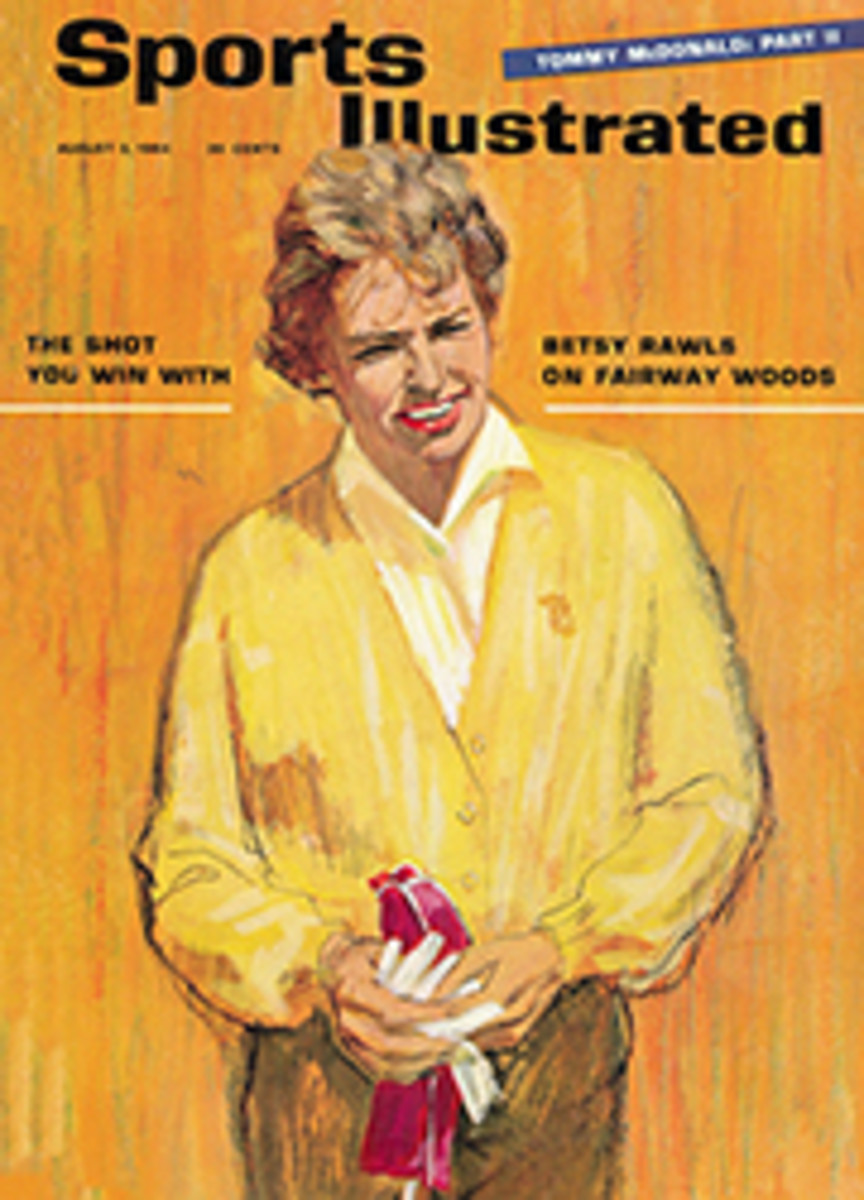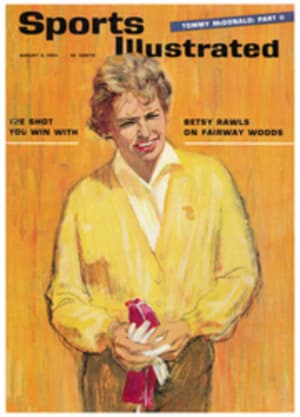
The tennis player who seeks equipment receives personal attention from Feron's
A tidy shop tucked into one corner of the Yale Club building in Manhattan carries nearly every imaginable piece of equipment for racket-games players, but its specialty is catering to the special needs, and possibly whims, of its tennis-playing customers. S. J. Feron's is not quite as venerable as the underhand serve in tennis (it was founded in 1919), but the shop has always taken pride in its ability to suit the implement to the player. "We take into account the player's experience, physique and hand size in outfitting him with a racket," says Jim Feron, son of the founder of the business. (S. J. Feron was the world's open squash tennis champion and at one time was the squash racquets and squash tennis professional at the Harvard Club in New York. Jim Feron has played all the racket games and personally tests each piece of equipment the shop carries.) "Most players, swinging a racket in a store, feel comfortable with a small-sized handle. Then, when they get on the court, they find the racket turns in their hand as they hit the ball. This makes for a bad stroke and can also cause blisters or callouses. We encourage the player to take the largest-size grip he feels comfortable with." Feron's can cut down the size of the grip or increase it on a racket the customer has already bought, if necessary.
The customer has 20 models to choose from among the 750 rackets in the shop, some coming from England, France, Australia and Italy. The most expensive racket is made by Bancroft of Pawtucket, R.I., the oldest racket maker in the country. It is strung with the highest-priced gut and costs $40, Feron's itself designed a tennis racket—the Feron Power Bat—which comes in two models: the Imperial, with a square pallet (or throat), designed for a player who whacks the ball hard; and the Regular, with a beveled pallet. This racket has a more flexible frame, for the player who relies primarily on ball control and "touch" shots. Each model, unstrung, costs $20.
Customers have a choice of eight types of stringing—nylon, lamb or sheep gut. The least expensive is nylon Profected ($6.50) and the most expensive is sheep gut, which costs $14.50. Nylon is more moisture-resistant than gut, but if a player is serious about his game, Feron recommends gut, which gives the player a better "feel" of the ball when he hits it.
Stringing is done to the customer's specifications—from very tight to relatively loose. The job itself takes about 45 minutes. But because of the demand for this service, it is best to give the shop about two or three days for the work. As a further service, the shop keeps a record of the racket preferences of customers in a file on the selling floor, so that a favorite racket can be quickly duplicated.
A most impressive gift for a tennis player is the Feron gift package. This consists of an empty frame and coiled strings, all wrapped in cellophane (shown on preceding page). Aware of the difficulty one person has in choosing the proper racket for another, Mr. Feron invites the recipient of the gift to come to the shop and exchange the racket for one of the same price, to make sure balance, weight and grip are suitable. The shop strings the racket to the recipient's specifications, using the strings in the package, without charge.
Other items of tennis equipment at Feron's range from the sizable to the minuscule: tennis nets, sweat bands for the head, sweatlets for the wrist, tennis gloves with terrycloth backing faced with washable chamois, resin for the hands, wrist exercisers and various types of tennis balls—red ones, yellow ones and conventional white ones—heavy-duty balls for asphalt and cement, bouncy ones for grass and Swedish-made Tretorns. The latter is a best-selling item. Feron has found that Tretorns, which come four to a package, outlast others from the standpoint of durability of rubber and cover. Unlike conventional tennis balls, they are not pressurized and can be punctured with a pin without losing their liveliness. When soiled, they can be tossed inside a washing machine and cleaned. Their resiliency, according to Feron, is not affected. The Swedish company also manufactures a Tretorn Trainer, costing $10.95 at Feron's. This consists of a tennis ball attached to an elastic band, which is in turn affixed to a short pole and stanchion. The elastic returns the ball to the player every time he hits it.
An important piece of equipment for tennis players, Feron thinks, is the press; racket frames are subjected to such high tension by the stringing that they are apt to warp if the frame does not receive support when the racket is not being used. He recommends a well-made wooden press, but for those who travel he suggests a lightweight, French-made, X-shaped aluminum press—called the Zephyr—which costs $3.50.
Feron's also carries squash rackets, badminton rackets and platform tennis rackets, along with the balls and equipment that go with these games. A racket for court tennis is on the wall, but is not for sale.
In the area of tennis apparel, Feron's caters only to men. "We don't have sufficient space to carry a complete women's line and do a good job," says Feron. Ladies are limited to buying tennis socks (wool or wool and Orlon) and tennis shoes. The men are luckier: Feron's carries white and off-white tennis shorts, a few pairs of long white flannels for the classicists, Dacron and cotton tennis shirts and stretch shorts. The last are made of cotton and stretch nylon and give more flexibility than conventional shorts and cost $9.50. A big seller is the white floppy Australian tennis hat (shown above) worn notably by Chuck McKinley and teenage star Cliff Richey. The hat has a green underbrim and, for greatest coolness, is worn with the brim pulled down all around. It costs $3.50. Feron says he can't keep them in stock.
While wearing anything but white on most tennis courts is deemed as heinous a crime as defacing a Goya, a tiny amount of insurgence is going on. Feron caters to the insurgents by selling D-ring cinch belts made of nylon grosgrain, striped in several bright colors (above). Most tennis shorts do not have belt loops, but Feron's carries some that do. If a player's shorts have loops and he remains a purist, Feron will outfit him with a white tennis belt.
TWO ILLUSTRATIONS

